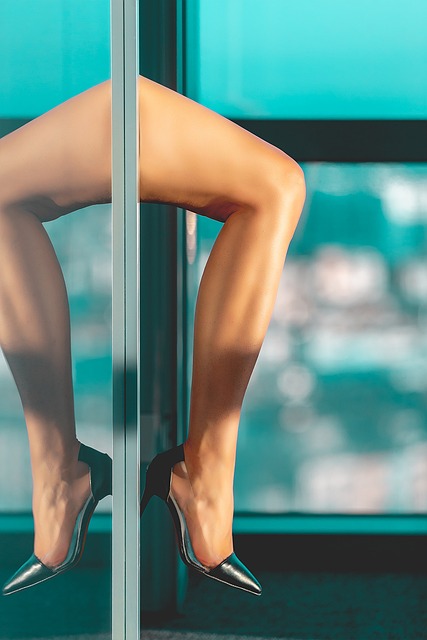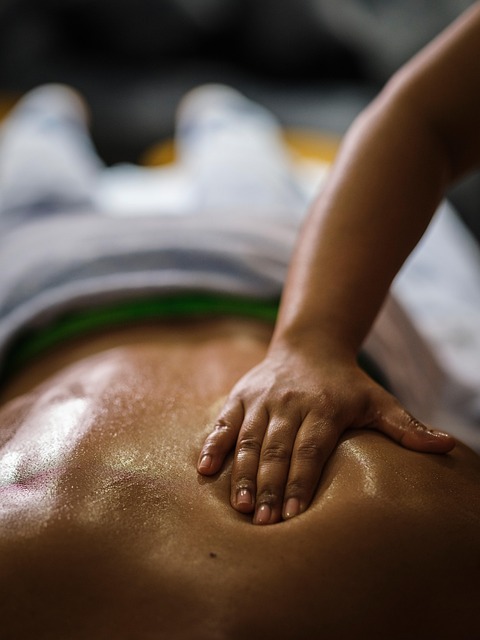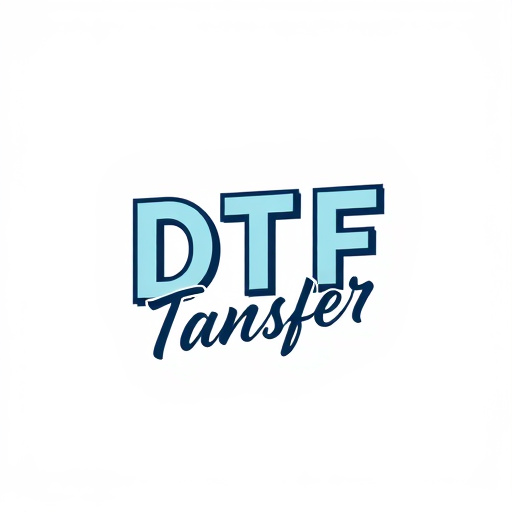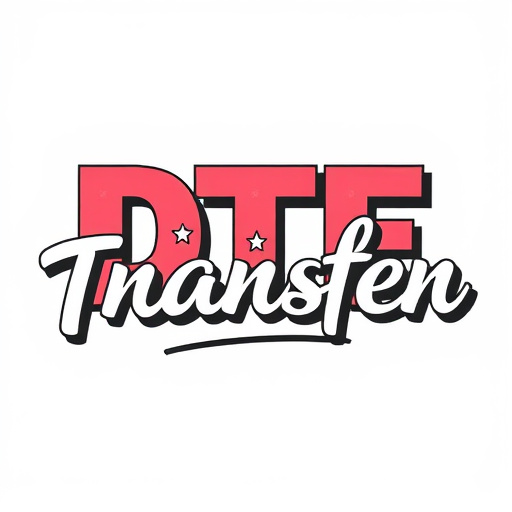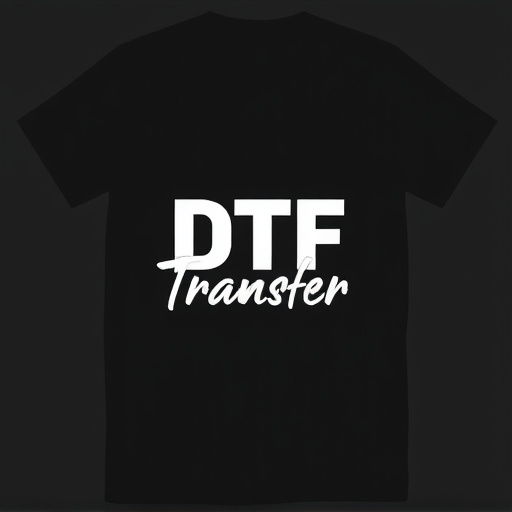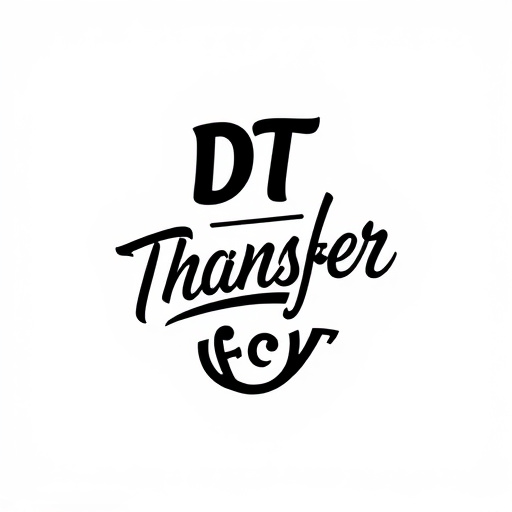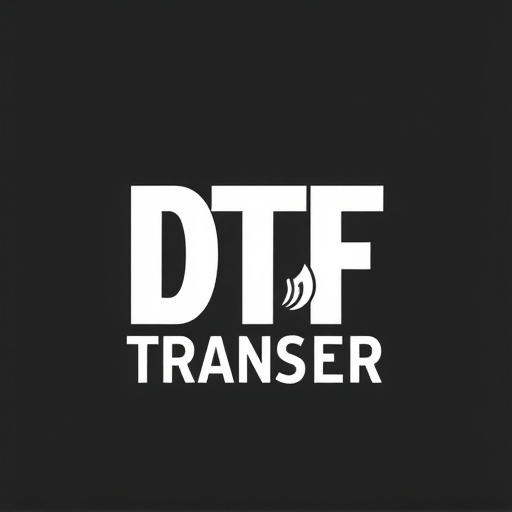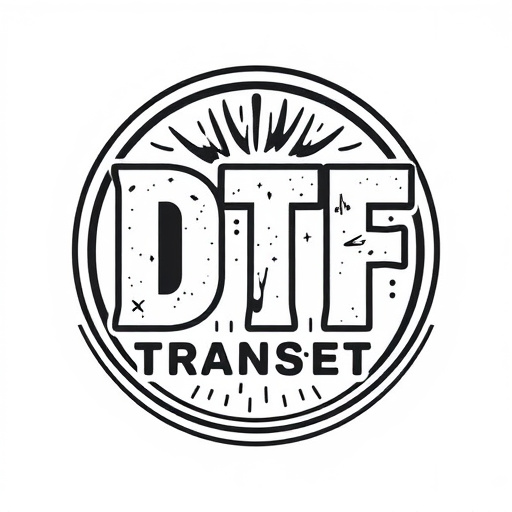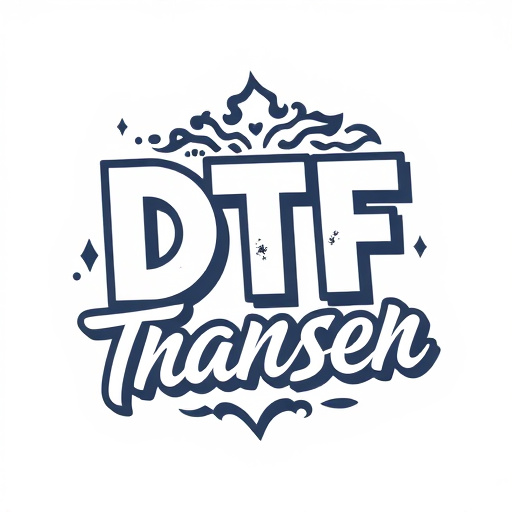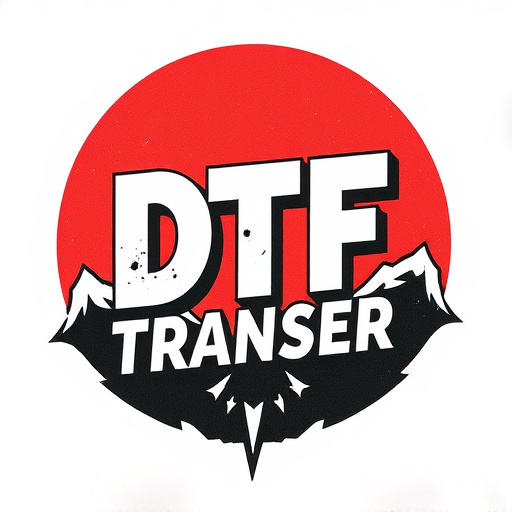Flexible film transfers through Direct to Fabric (DTF) Printing revolutionize printing on stretchy fabrics, ensuring crispness and clarity even with fabric movement or shrinkage. This technology expands color and design options, accommodating complex patterns with vibrant hues and rich textures for activewear and performance fabrics. DTF Printing empowers designers to create dynamic, personalized garments while streamlining production and reducing waste, making it an eco-friendly game-changer in the textile industry. The future of flexible fashion looks bright with advancements in inkjet technology, opening doors to creative solutions for apparel, sports gear, and medical apparel.
Discover the future of fabric printing with flexible film transfers that revolutionize textile design. This article explores DTF Printing, a cutting-edge technique transforming the fashion and textile industries. Learn how this technology offers unparalleled advantages for stretchy fabrics, enabling dynamic designs previously unimaginable. From understanding the science behind DTF Printing to its diverse applications and material considerations, we delve into this game-changer, spotlightting its potential in print on demand.
- Understanding DTF Printing: A Revolutionary Film Transfer Technique
- The Advantages of Flexible Film Transfers for Stretchy Fabrics
- How DTF Printing Works: Unlocking the Potential of Dynamic Designs
- Applications in Fashion and Textile Industries: Enhancing Creativity
- Material Considerations: Ensuring Optimal Results with DTF Printing
- Future Prospects: Expanding Horizons in Print on Demand
Understanding DTF Printing: A Revolutionary Film Transfer Technique
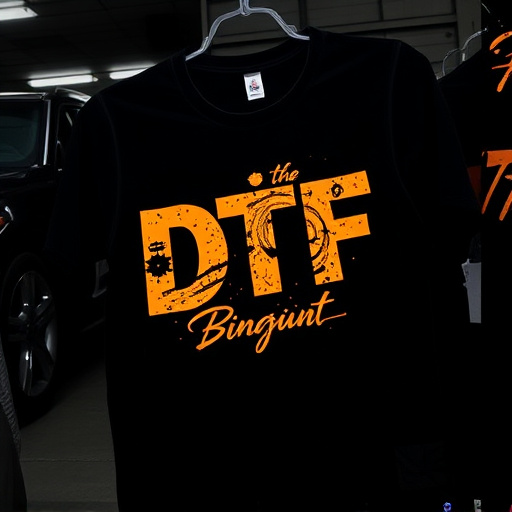
DTF (Direct to Fabric) Printing is a groundbreaking technique that has revolutionized the way we transfer films onto stretchy fabrics. Unlike traditional methods, DTF allows for direct printing onto fabric surfaces, enabling intricate and vibrant designs to be achieved with remarkable precision. This innovative process involves a special ink that adheres directly to the fabric, ensuring the image moves seamlessly with the material’s stretch and movement.
The beauty of DTF Printing lies in its ability to create flexible film transfers that are both durable and dynamic. By using advanced printing technology, designers can produce high-resolution images and patterns that not only look stunning but also maintain their integrity when stretched or folded. This makes it an ideal solution for a wide range of applications, from clothing design and activewear to decorative fabrics and even automotive interiors.
The Advantages of Flexible Film Transfers for Stretchy Fabrics
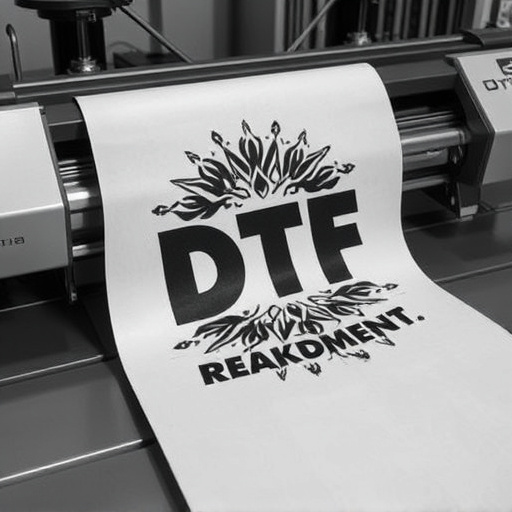
Flexible film transfers offer a unique and innovative approach to printing on stretchy fabrics, providing several advantages in this specialized field. One of the key benefits is their ability to maintain crispness and clarity even when the fabric stretches or shrinks. This is particularly valuable for garments and accessories that require movement-friendly materials, ensuring the print remains intact during wear and wash cycles.
Additionally, DTF Printing (Direct to Fabric) using flexible film allows for a more comprehensive color palette and superior image quality. The transfers can accommodate complex designs with fine details, vibrant hues, and rich textures, elevating the overall aesthetic of the fabric. This technology is a game-changer for designers and manufacturers, enabling them to create dynamic and visually appealing products that cater to modern consumer preferences.
How DTF Printing Works: Unlocking the Potential of Dynamic Designs
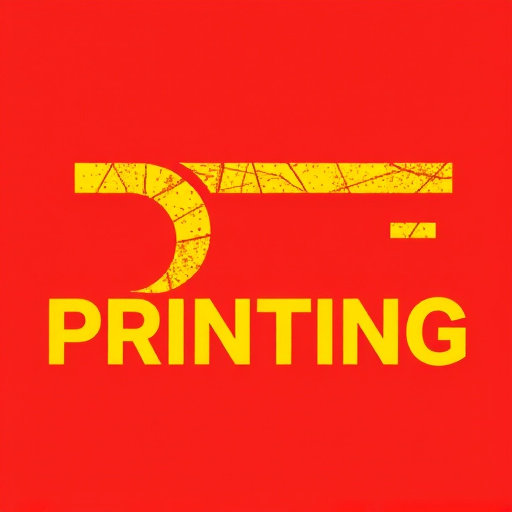
DTF Printing, or Direct-to-Fabric Transfer Printing, is a game-changer in the world of textile design and customization. This innovative process allows for dynamic and flexible film transfers that can move and stretch with any fabric, opening up a world of creative possibilities. By applying a thin layer of ink directly to a fabric’s surface using heat and pressure, DTF Printing creates durable, vibrant designs that are both soft to the touch and highly versatile.
Unlike traditional printing methods that might restrict movement or cause cracking, DTF Printing inks are specially formulated to remain flexible. This ensures that no matter how much a fabric stretches or moves, the design remains intact, making it perfect for activewear, performance fabrics, and other dynamic textiles. The process starts with preparing the fabric, applying the ink design, curing it under heat, and then transferring it to the final product. This method is not only efficient but also enables the production of unique, personalized, and highly functional garments and accessories that can keep up with the wearer’s every move.
Applications in Fashion and Textile Industries: Enhancing Creativity
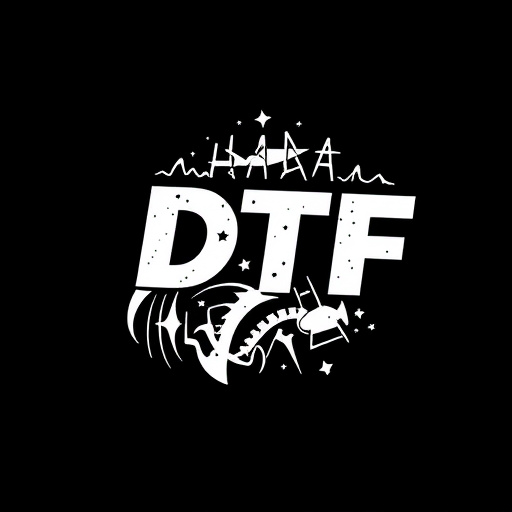
The fashion industry has embraced innovative technologies, and flexible film transfers have emerged as a game-changer. One of their most significant applications is in DTF (Direct to Fabric) Printing, allowing designers to create dynamic and unique textile patterns. This method enables seamless integration of intricate designs onto stretchable fabrics, such as activewear, sports jerseys, and even fashion garments. The ability to print directly on fabric opens up a world of creative possibilities for designers, who can now experiment with bold graphics, photographic images, and custom artwork that move and adapt with the fabric’s flexibility.
By utilizing flexible film transfers, textile manufacturers can offer clients a wide range of customizable options, from sports teams’ uniforms to high-end fashion collections. This technology streamlines production while ensuring that each piece maintains its visual appeal and structural integrity. Moreover, DTF Printing reduces waste by enabling precise application of designs, making it an eco-friendly choice for environmentally conscious brands.
Material Considerations: Ensuring Optimal Results with DTF Printing
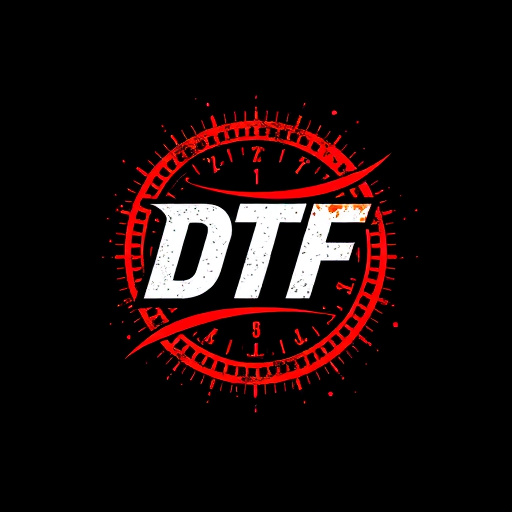
When considering flexible film transfers for stretchy fabrics, material selection is paramount for achieving optimal results with DTF (Direct-To-Film) printing. The fabric’s elasticity and stretch must be matched with a suitable film that can accommodate its movement without cracking or losing integrity. Polyester-based materials are often preferred due to their durability and ability to maintain clarity when stretched.
DTF Printing requires specific films designed to bond strongly with various fabric types, ensuring the print remains vibrant and secure even under extreme stretching. The correct combination of film and fabric can yield remarkable visual effects, making flexible transfers ideal for activewear, sports equipment, and other dynamic products where form-fitting designs are essential.
Future Prospects: Expanding Horizons in Print on Demand
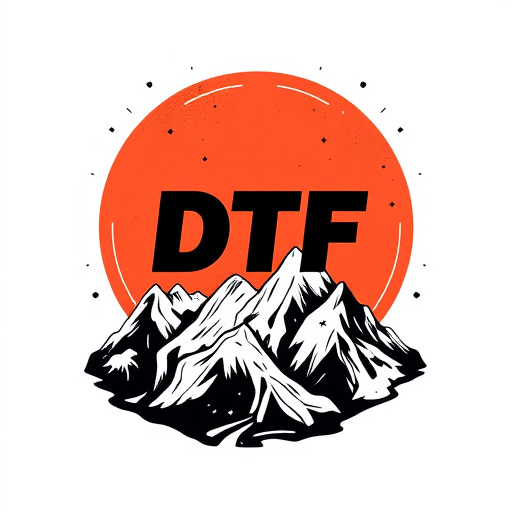
The future of flexible film transfers and print-on-demand technologies looks promising, especially with the advent of Direct to Fabric (DTF) Printing. This innovative approach is set to revolutionize the way we incorporate custom designs into stretchy fabrics, expanding the horizons of what’s possible in the apparel industry. DTF Printing offers unparalleled versatility, allowing designers and manufacturers to create unique, stretchable garments with intricate details and vibrant colors.
With advancements in inkjet technology, printers can now produce high-resolution images directly on various fabric types, including elastane and spandex. This opens up a world of creative opportunities, enabling the production of activewear, sports equipment, and even medical apparel with customizable patterns and performance-enhancing properties. As demand continues to grow for personalized, stretchable fabrics, DTF Printing is poised to become a game-changer in the print industry, offering speed, efficiency, and an unparalleled level of design customization.


